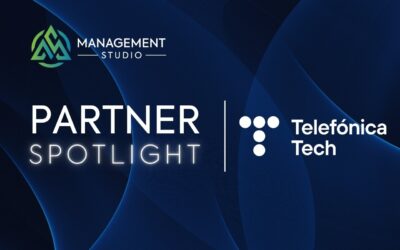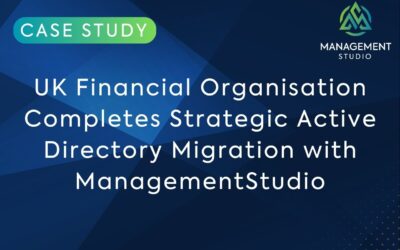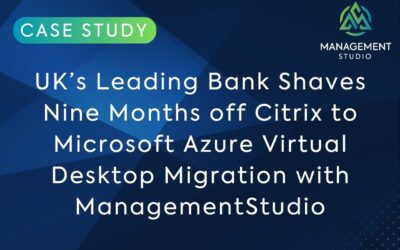Fireside chat with Carolyn Thomas
Coordination Manager for Client Computing, Brunel University
Further to our case study – where we highlighted Brunel University’s use of ManagementStudio to migrate their estate to Microsoft’s Modern Workspace back in 2020 – we recently sat down with Carolyn Thomas to learn how ManagementStudio now forms part of their business as usual processes.
ManagementStudio (MS): Our original case study focused on your strategic upgrade of 6,200 devices to Microsoft’s Modern Workpsace in 2020, what have you been using ManagementStudio for since then?
Carolyn Thomas (CT): We use ManagementStudio for our application management. We have 1200 accepted applications and we use ManagementStudio for ‘cradle to the grave’ for all our apps; from request to decommissioning.
MS: Are there any other BAU functionalities that you use ManagementStudio for?
CT: As part of our managed process, we use ManagementStudio for all our UAT (user acceptance testing) communications. It is also extremely useful for ensuring my department remains organised, it helps us keep on top of things. We are a centralised IT service to all the colleges within Brunel University and we are a central point of information and ManagementStudio is the platform for collating and retaining that information. We use it with connectors to collate information from SCCM, AD Azure, etc. and it gives us a solid view of current status and also enables us to plan.
MS: What current projects are you working on with ManagementStudio?
CT: Obviously, we’re currently undergoing a Windows 11 transformation and ManagementStudio is clearly central to that project. However, we also use it to manage our assets as we’re migrating people and devices. We use ManagementStudio to migrate team by team. We determine what device each individual is using and we use ManagementStudio to schedule migrations to avoid interference with academic busy times and reduce any disruption. ManagementStudio is now managing over 7,000 end-point devices in our IT estate and without ManagementStudio we couldn’t provide the same level of service to our users and projects would take so much longer.
MS: Have you noticed any differences or challenges in this current migration to your previous one?
CT: This migration is very different from our Windows 7 -> Windows 10 migration. We have more laptops, work patterns have changed, our estate has changed somewhat but we can manage this transformation far more rigorously this time due to more experience with ManagementStudio. It’s enabled us to embrace a lot more of device management. The previous migration involved replacing hardware whereas moving to Windows 11 is more ad-hoc and more flexible, so there isn’t quite so much user buy-in to the benefits this time! However, we use ManagementStudio to communicate to users that Windows 11 include more features and we offer a much more flexible transformation process, thanks to ManagementStudio. I can create a deployment unit and then use ManagementStudio to report on that group to see if they’re Windows 11 ready, then from that report, create a plan. This enables us to minimise downtime and be more responsive to ever changing demands. I use the comms feature for standard email templates that negate the usual questions like how long will it take, what are the timescales, etc. There is great customisation within this feature that we take advantage of.
The visibility that ManagementStudio is providing during this migration enables us to do 80% first, where the device is ready and the user is on campus, then to look at devices that are not ready and the remote workers next.
We’re also using ManagementStudio for other processes like domain consolidation and Microsoft Entra as well . With more laptops and remote workers now in our estate, the great reporting within ManagementStudio identifies who has migrated, even if they’ve not marked themselves as “done”.
MS: Is there any way that Brunel quantifies the value you get from ManagementStudio?
CT: Unlike commercial entities, academia doesn’t put a high value on time, but ManagementStudio saves us an inordinate amount of time. As an early adopter of ManagementStudio I spent some time getting the colleges to embrace it versus doing things ad-hoc or using spreadsheets! The holistic view that ManagementStudio provides us of the BAU “triangle” as I call it – user, apps, device – provides visibility into what is happening in the estate. If a device has an issue, we can look at who last used it, what and how many apps are being used, etc. so it helps with reducing service desk calls as well as enhancing the user experience.
MS: To conclude, do you have any other comments about your use of ManagementStudio that might be interesting to others?
CT: What I love about ManagementStudio is you’re always bringing out new features and are really responsive to customer suggestions. You are always receptive to suggestions for future development and consider them and listen. You also provide feedback if you can or can’t include feature requests. Mentoring and support is also great from ManagementStudio, you will always spend time ensuring I get the most out of the solution.



